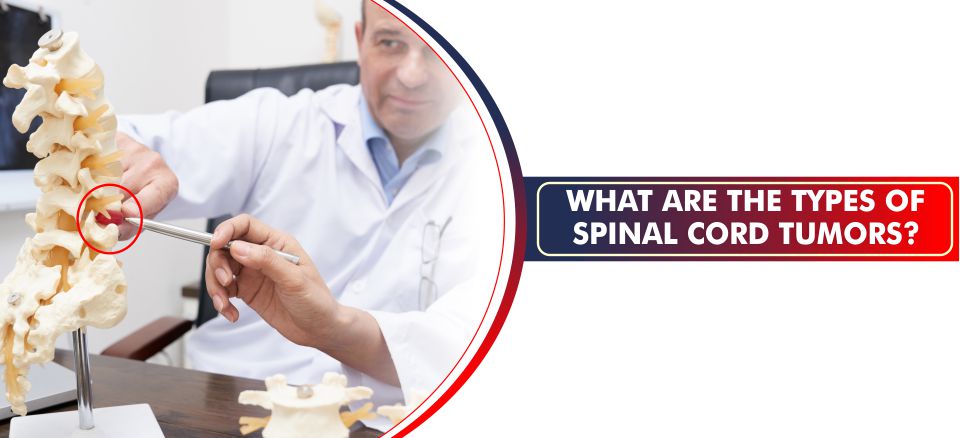


[vc_row][vc_column][vc_column_text]Spinal tumors are uncommon, but that doesn’t mean they are unheard of. These tumors can grow slowly, and you may overlook its symptoms with those of more common conditions.
Although the word spine tumor seems scary, early detection and proper treatment can save a person’s life.
Spinal tumors are defined as abnormal growth arising from any of the tissues that make up the spine. The spine tumors can be malignant [ cancerous ] or benign [ non-cancerous]. As spine tumors grow, they can put pressure on the spinal cord.
Where do these tumors form?
Our spine is made up of different tissues that span the entire length of your back, into your neck and pelvis. A tumor can form in almost every issue. The tissues that may develop tumor are:
The symptoms of spinal tumors depend on where the tumor is located or whether or not it is cancerous. However, the common spinal cord tumors may include:
Although spine pain is mostly located in the lower back or neck, pain for spinal tumors can generally be felt in the upper or middle back.
The pain for a spinal tumor may feel like shock pain in the chest, abdomen, legs, or legs.
Spinal pain may feel like achiness or discomfort deep within the back.
Spinal tumor pain may intensify at night and can cause disturbed sleep.
Muscle weakness, especially in your arms or legs, can also signal a spine tumor.
Spinal cord tumors are generally of two types. It includes:
Primary spinal tumors
This tumor originates in the spinal column by growing in the bones, discs, nerves, or other elements within the spine. Such tumors are usually non-cancerous and occur mostly in younger people. Hemangiomas are the most common benign primary spinal tumors.
Secondary spinal tumors
These are the tumors that have spread to the spine from cancer that has started elsewhere in the body. Such tumors are the most common type in the spine and are cancerous. They have the potential to spread further as these are fast-growing tumors. Moreover, the cancerous cells from the lungs, breast, and prostate are likely to spread in the spine.
Spinal tumor by location
Spinal cord tumors can also be classified based on their location inside or outside the spinal code.
Extradural Tumors
A spinal tumor that is formed outside the spinal cord’s outermost protective layer is known as an extradural tumor. These tumors usually spread because of cancer that is located in another part of the body.
Intramedullary tumor
An intramedullary tumor grows inside the spinal cord and arises from the cells that provide physical support for the nervous system. These tumors mainly occur in the cervical spine. Various kinds of intramedullary tumors are
Intradural-extramedullary tumors
This spine tumor is located inside the thin covering of the spinal cord. These tumors are benign and are slow-growing. Moreover, they can cause symptoms of pain and weakness. Common intradural-extramedullary tumors are:
Spinal cord tumors need immediate medical attention. See your doctor if your symptoms are:
Tests to undertake
If your doctor suspects a spinal cord tumor, these tests can help confirm the diagnosis and pinpoint the tumor’s location.
The treatment for spinal tumors will differ based on tumor type, aggressiveness, and other factors. The treatment options may include:
Thanks to the advances in modern-day surgical techniques, skilled surgeons can now perform minimally invasive neuro spine surgery. We at Amandeep Group of Hospitals successfully introduced this surgery to better treat the patients diagnosed with brain tumors and spine tumors. Fortunately, with the advent of Navigation Technology, neurosurgeons can now perform such delicate procedures with ease. This technology guides the neurosurgeon to navigate within the confines of the skull and take the tumor out without involving the other nerves in the brain.
Notably, these surgeries require specialized instrumentation and significant surgical expertise. Therefore, our team of best surgeons has always been at the forefront to perform these complex surgeries with full commitment and care.
Amandeep Group Of Hospitals is known to provide the most effective treatment to its patients. Our Neurosurgeons have years of experience in handling complex brain and spine-related surgeries.
Contact the neuro specialist and get the best treatment under their expert supervision.[/vc_column_text][/vc_column][/vc_row]
September 30, 2024
Recognize the Signs: Understanding Appendicitis Pain Symptoms
September 24, 2024
Unveiling the Truth: I-Pill Side Effects Every Woman Should Know
We use cookies to enhance your experience. By clicking "Accept", you agree to our use of cookies.